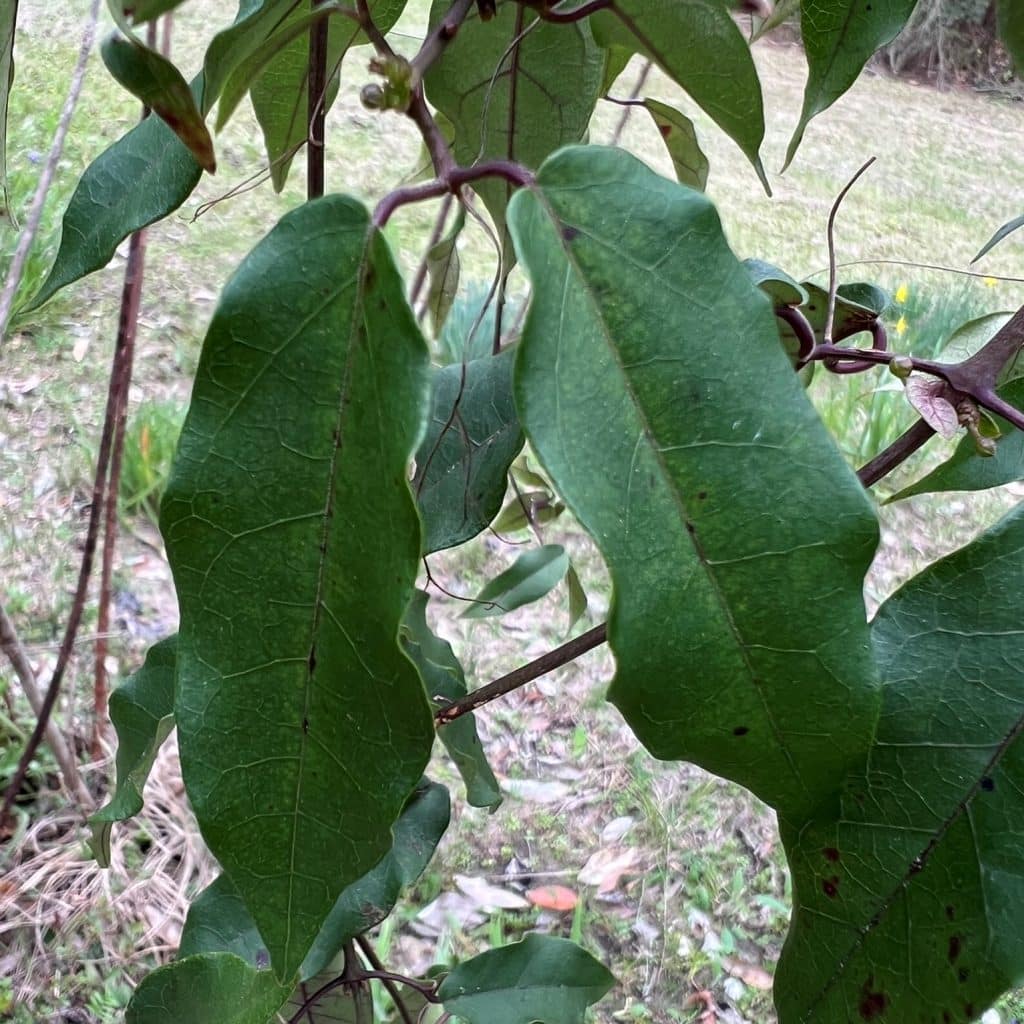Ruby-throated Hummingbirds return to the northern Gulf Coast on or about the Ids of March. And the first clue to their presence is often their high pitch chatter, coming from the trumpet-shaped flowers of Cross Vine, blooming high above our heads, in our tree canopy. Of several flowers that provide the first sips of nectar for these returning birds, Cross Vine takes the lead.
And none too soon for these long-distant travelers that just completed a 500-mile trek across the Gulf of Mexico from the Yucatan peninsula – at 50 miles per hour, a 10-hour flight. They are as exhausted as you might think and need to recharge on nectar and the many small insects that make up their diet.
As with Red Buckeye, Coral Honeysuckle, and Coral Bean, Cross Vine is a major source of nectar for these birds, with the timing of bloom tied to their own reproduction. Nectar may be the prize for hummers, but pollination is the gift for these plants. All of them have tubular, trumpet-shaped flowers (all red in color) that require long tongues to reach. Hummers are important pollinators of all of them.
Their initial bloom timing is the story for all these plants, which is connected to the arrival of the millions of hummingbirds that make their way back to North America over an extended period of weeks. After the first birds arrive along the coast in mid-March, hummingbird arrival maps show dates of arrival to more northern areas of the country and Canada stretching into May, and all of these birds come through the Gulf Coast to get to their ultimate destinations.
Cross Vine, Red Buckeye, and Coral Honeysuckle are the first to bloom in early March, one with flowers high in the trees, the others lower to the ground. For Buckeye, the flowering period is short (a week or two) and benefits from the first flush of hummers coming through. Cross Vine bloom time extends a bit longer into April to May as more hummers arrive.
Coral Honeysuckle will bloom repeatedly over the summer and into fall, benefiting from those hummers that nest on the coast (June and July) and the southward migration of hummers in September. Coral Bean begins to bloom in April during the peak of hummingbird migration, ending in May. The progression of bloom times for this species from the southern to the northern part of its range coincides with this part of the annual migration. Trumpet Creeper is another vine that feeds hummers in summer.

For me, Cross Vine is the hidden jewel of the bouquet of hummingbird-friendly flowers in early spring, typically blooming beyond our view (fallen flowers are often all we see). But that does not mean it can stay that way. Cross Vine is a great choice as a landscape plant that adds value beyond its blossoms. This vine climbs by means of tendrils that have small adhesive pads that do not damage brick or wood as other vines do. The linear, opposite leaves appear bifoliolate (paired) but are actually trifoliate – a branched tendril being the third element. The leaves drape from the vine, are semi-evergreen, and turn from a rich green to purple in fall.
The cross in its name refers to the “t” or cross-shaped septa seen in a cross-section of the vine. This species is a host plant for the Gray Hairstreak Butterfly and Rustic Sphinx Moth. It is an attractive vine that deserves a place in our landscape, but most of all it harkens to the arrival of hummingbirds in spring.
Hope to see you in our great outdoors!